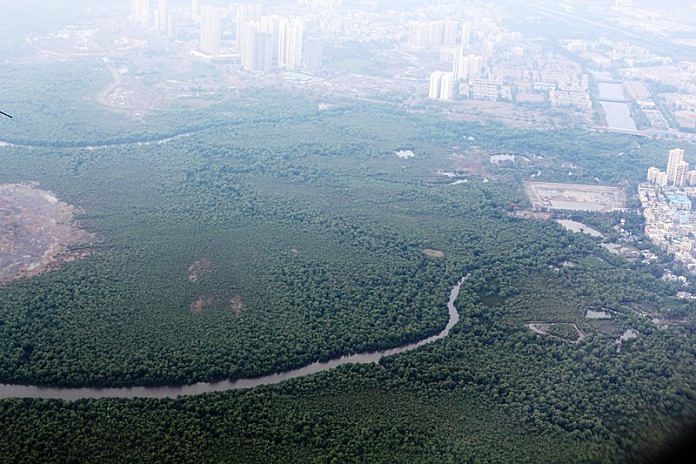
A Rs 2,000-crore sewage treatment plant, touted to be Mumbai’s largest, will now come up in part of the mangrove forest in suburban Malad.
Mumbai: The Brihanmumbai Municipal Corporation (BMC) is all set to build a much-delayed Rs 2,000 crore sewage treatment plant with the Central government allowing a tweak in the afforestation condition attached after a year of back-and-forth.
The plant at Malad is expected to destroy a mangrove plantation, described as the lungs of polluted Mumbai, spread over an estimated 36 hectares.
As a condition for its approval, the union ministry of environment and forests had asked the BMC last year to set up a compensatory mangrove plantation on roughly 180 hectare, about five times this area. Coastal Regulation Zone (CRZ) norms prescribe compulsory afforestation of mangroves if a certain stretch is damaged or destroyed. But the calculation of compulsory afforestation is based on the number of trees damaged and not the total area under CRZ.
Citing the fine print of the CRZ notification, the BMC objected to the ministry’s condition of planting mangroves on five times the area destroyed. Moreover, the civic body said it was difficult to find a 180-hectare area in the space-starved Mumbai Metropolitan Region that can be fit for mangrove plantation.
Also read: Decongestion projects on the cards, Mumbai to see hectic building activity from October
The civic agency then got an environment consultant to count the number of individual plants in the affected area. This was done under the supervision of the city’s mangrove conservation watchdog. The figure arrived at was 25,900.
According to a BMC official, the forest department specifies that 4,444 mangroves can be planted per hectare, which means the civic body will only require 29.14 hectare for the compensatory afforestation to plant five times the number of mangroves affected.
The BMC took this figure to the ministry and sought an amendment in the environment clearance issued to reduce the total area required for compulsory afforestation. The ministry, which was initially reluctant, agreed. This means the BMC will now have to replant only a 29-hectare area, just about a sixth of the earlier requirement.
A BMC official said they were hopeful the tendering process for the Malad plant will now be launched soon.
“We have the amended environment clearance now as well as 24 hectares of land for the replantation of mangroves, while the procurement of 11 hectares more is in the final stages,” he said.
“We hope to start the tendering process for the project by the year-end,” the official added.
Conflict over compensatory plantation of mangroves
The proposed plant at Malad is part of an ambitious plan to overhaul the city’s 130-year-old sewage treatment system. The Mumbai Sewage Disposal Project envisages the establishment of seven sewage treatment plants across the city.
The plants will disinfect, treat and recycle water for use for non-potable or industrial purposes.
While most of the other projects under it are at various stages of tendering and execution, the Malad plant was stuck so far on account of the dispute over the afforestation condition.
The Malad plant, touted to be the largest treatment in the city, is expected to generate 847 million litres of water per day.
The dispute
The plant at Malad falls under CRZ-I. Ecologically sensitive area covered by mangroves, sand dunes, corals, salt marshes and so on, or the distance between the low tide line and the high tide line is designated as CRZ-I.
After the BMC first raised an objection to their afforestation panel, an expert panel of the environment ministry ruled at a meeting in July that “…there could be no compromise in so far as mangrove regeneration/replantation is concerned, since these are eventually the lungs of Mumbai”.
The panel said replantation based on the number of plants would be a “highly misadventures proposition” as supporters of the project may give arbitrary estimates of the number affected.
In a subsequent meeting, on 30 August, the BMC explained that it had got an environment consultant to count the exact number of mangroves on the site under the guidance of the Mumbai Mangrove Cell.
Also read: Should Mumbai refineries be shifted out of city? Chembur fire revives debate
“According to forest department norms, 4,444 mangrove trees can be planted per hectare, which makes the total land requirement for replantation… 29.14 hectares,” said a BMC official.
“We explained that the BMC is already in the process of providing 35 hectares somewhere in the region to the forest department for the compulsory afforestation and it can actually plant more mangroves than required,” the official added.

COMMENTS